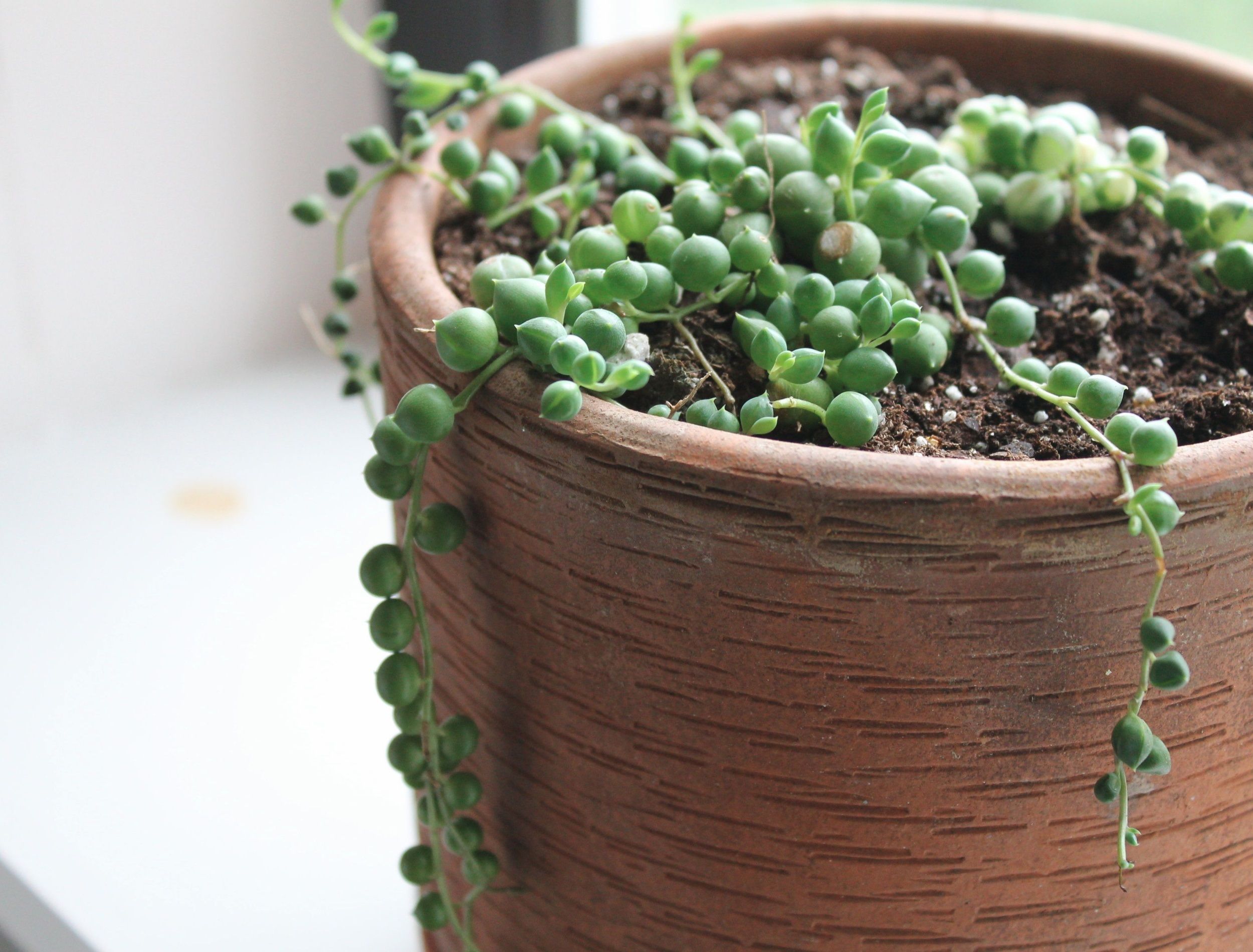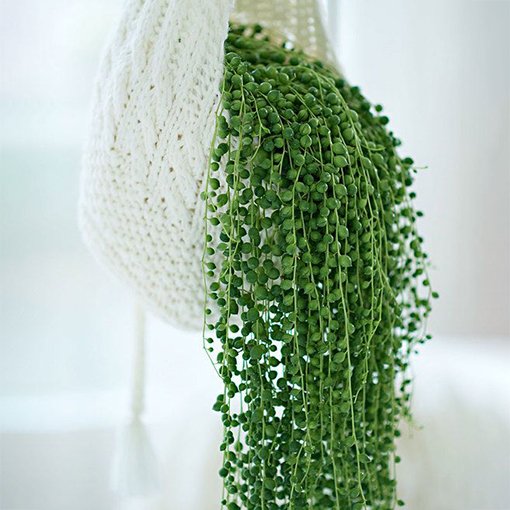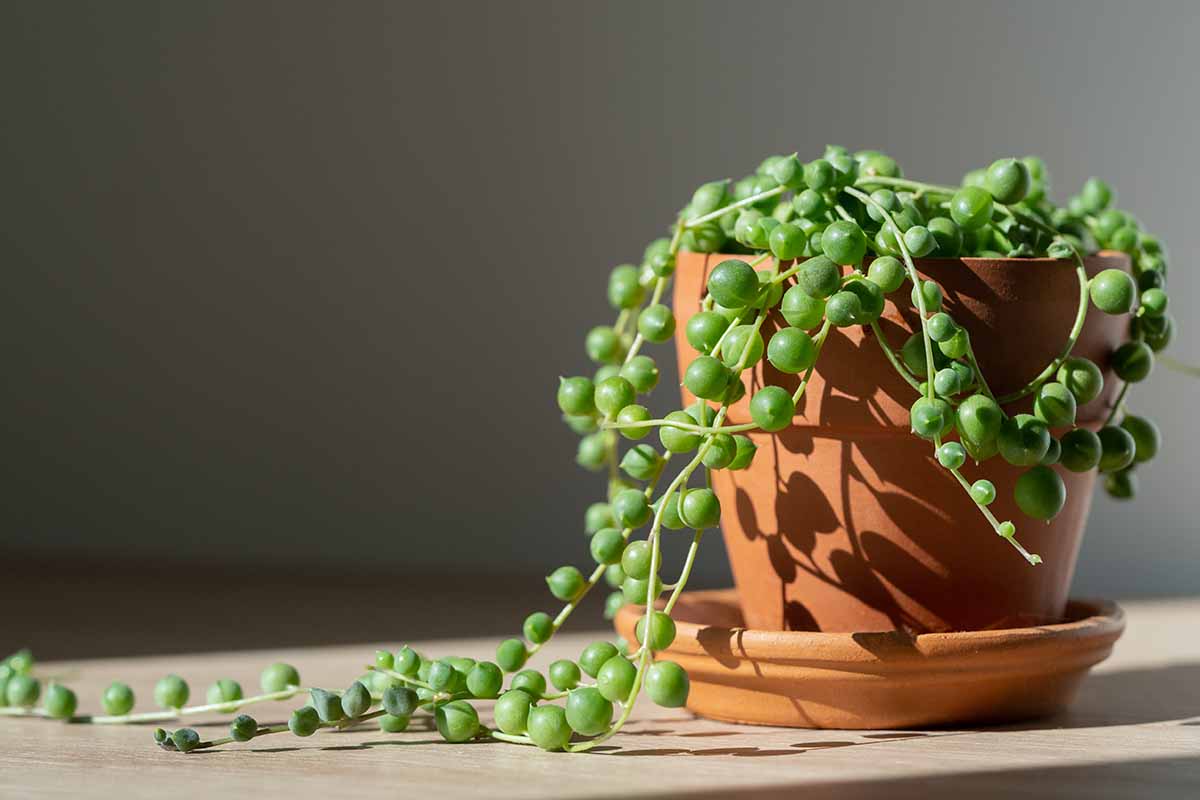Unlocking the Secrets of Senecio rowleyanus Care
The String of Pearls succulent, also known as Senecio rowleyanus, is a unique and captivating plant that has gained popularity among succulent enthusiasts. Its trailing stems, adorned with small, round “pearls,” make it a stunning addition to any indoor or outdoor space. With proper String of Pearls succulent care, this low-maintenance plant can thrive and provide beauty and interest for years to come.
One of the primary benefits of growing a String of Pearls succulent is its ability to tolerate neglect. This makes it an ideal choice for busy individuals or those new to succulent care. However, like all plants, it still requires attention to its specific needs to truly flourish. In this comprehensive guide, we will delve into the world of String of Pearls succulent care, exploring the essential elements necessary for optimal growth and health.
By understanding the unique characteristics of the String of Pearls succulent and providing the right environment, watering, fertilization, and pruning, you can unlock the full potential of this incredible plant. Whether you’re a seasoned succulent enthusiast or just starting your collection, this guide will provide you with the knowledge and confidence to cultivate a thriving String of Pearls succulent.
In the following sections, we will explore the key aspects of String of Pearls succulent care, including how to provide the ideal environment, the art of watering, fertilization and pruning, pest control, propagation, and more. By the end of this article, you will be equipped with the knowledge and skills necessary to provide the best possible care for your String of Pearls succulent, ensuring it remains a stunning and healthy addition to your space.
How to Provide the Ideal Environment for Your String of Pearls
Creating an optimal environment is crucial for the health and well-being of your String of Pearls succulent. Lighting, temperature, and humidity all play a significant role in determining the success of your String of Pearls succulent care routine.
Lighting is one of the most critical factors in String of Pearls succulent care. These plants prefer bright, indirect light but can tolerate some direct sunlight. Placing your String of Pearls succulent near an east- or west-facing window is ideal, as it will receive gentle, indirect light. Avoid placing your plant in a spot with intense, direct sunlight, as this can cause the leaves to become scorched.
Temperature is also an essential consideration in String of Pearls succulent care. These plants prefer daytime temperatures between 65-75°F (18-24°C) and nighttime temperatures around 55-65°F (13-18°C). Avoid placing your String of Pearls succulent near heating or cooling vents, fireplaces, or drafty windows, as this can cause temperature fluctuations that may stress the plant.
Humidity is another factor to consider in String of Pearls succulent care. These plants prefer a relatively low humidity environment, around 40-50%. You can use a humidifier to maintain the optimal humidity level, especially during the dry winter months. However, be cautious not to over-humidify, as this can lead to root rot and other problems.
In addition to lighting, temperature, and humidity, the placement of your String of Pearls succulent is also important. Indoor placement is ideal, as it provides protection from extreme weather conditions and pests. However, if you prefer to place your plant outdoors, choose a spot with partial shade and well-draining soil. Avoid placing your String of Pearls succulent in areas with standing water or where water may collect, as this can lead to root rot.
By providing the ideal environment for your String of Pearls succulent, you can help ensure its optimal growth and health. Remember to monitor your plant’s response to its environment and make adjustments as necessary to provide the best possible care.
The Art of Watering: Tips for Healthy Roots and Stems
Watering is a crucial aspect of String of Pearls succulent care, and it’s essential to get it right to prevent common problems like overwatering and underwatering. The key to successful watering is to understand the plant’s water needs and to develop a schedule that meets those needs.
String of Pearls succulents prefer well-draining soil and should be watered sparingly, allowing the soil to dry out completely between waterings. Overwatering can lead to root rot, which can be fatal to the plant. To avoid this, check the soil moisture by inserting a finger into the soil up to the first knuckle. If the soil feels dry, it’s time to water.
Water your String of Pearls succulent in the morning, so the plant has the entire day to dry out. Use room-temperature water, and avoid getting water on the leaves to prevent fungal diseases. Watering at the base of the plant is the best way to ensure the roots receive the right amount of moisture.
A general rule of thumb for watering String of Pearls succulents is to water every 7-10 days during the spring and summer months when the plant is actively growing. During the fall and winter months, reduce watering to every 4-6 weeks, as the plant is dormant.
It’s also essential to monitor your plant’s response to watering and adjust your schedule accordingly. If you notice the leaves becoming wrinkled or shriveled, it may be a sign that the plant needs more water. On the other hand, if the leaves become soft and mushy, it may be a sign of overwatering.
By following these tips and developing a watering schedule that meets the needs of your String of Pearls succulent, you can help ensure the plant’s roots and stems remain healthy and thrive.
Fertilization and Pruning: Encouraging Healthy Growth and Development
Fertilization is an essential aspect of String of Pearls succulent care, as it provides the necessary nutrients for healthy growth and development. A balanced, water-soluble fertilizer is recommended, and it should be applied during the growing season (spring and summer) at a dilute strength (about half the recommended strength). Avoid fertilizing during the dormant season (fall and winter), as this can cause the plant to become leggy and weak.
When selecting a fertilizer for your String of Pearls succulent, look for a product that is specifically formulated for cacti and succulents. These fertilizers typically have a higher phosphorus content, which promotes root growth and development. Some good options include Miracle-Gro Cactus, Palm & Citrus Food and Schultz Cactus & Succulent Food.
Pruning is another important aspect of String of Pearls succulent care, as it helps to maintain the plant’s shape and encourage new growth. Prune your String of Pearls succulent during the growing season, removing any dead or damaged stems or leaves. Use a pair of clean, sharp scissors or pruning shears to make the cuts, and make sure to disinfect the tools between cuts to prevent the spread of disease.
When pruning your String of Pearls succulent, start by removing any dead or damaged stems or leaves. Then, cut back any leggy stems to encourage branching and promote a fuller plant. Finally, trim back any overgrown stems to maintain the plant’s shape and encourage new growth.
By fertilizing and pruning your String of Pearls succulent regularly, you can encourage healthy growth and development, and keep your plant looking its best. Remember to always follow the recommended fertilization and pruning schedules, and to use the right tools and techniques to avoid damaging your plant.
Pest Control and Common Problems: Identifying and Solving Issues
Despite their hardiness, String of Pearls succulents can still be susceptible to pests and common problems. Regular monitoring and prompt action can help prevent infestations and address issues before they become severe.
Common pests that can affect String of Pearls succulents include mealybugs, spider mites, and scale. Mealybugs are small, white, cottony insects that feed on the plant’s sap, causing stunted growth and yellowing leaves. Spider mites are tiny, spider-like insects that feed on the plant’s sap, causing yellowing leaves and fine webbing. Scale is a small, armored insect that feeds on the plant’s sap, causing stunted growth and yellowing leaves.
To control pests, start by isolating the infested plant to prevent the pests from spreading to other plants. Then, treat the plant with insecticidal soap or neem oil, following the product’s instructions. Repeat the treatment as necessary to ensure that all pests are eliminated.
In addition to pests, String of Pearls succulents can also be susceptible to common problems such as root rot, leaf drop, and etiolation. Root rot is a fungal disease that causes the roots to rot, leading to yellowing leaves and stunted growth. Leaf drop is a common problem that occurs when the plant is exposed to extreme temperatures, overwatering, or underwatering. Etiolation is a condition that occurs when the plant is not receiving enough light, causing it to become leggy and stretched out.
To address these common problems, ensure that your String of Pearls succulent is receiving proper care, including adequate light, water, and nutrients. Avoid overwatering and underwatering, and ensure that the plant is not exposed to extreme temperatures. If you notice any signs of root rot, leaf drop, or etiolation, take prompt action to address the issue and prevent it from becoming severe.
By being aware of the common pests and problems that can affect String of Pearls succulents, you can take steps to prevent infestations and address issues before they become severe. With proper care and attention, your String of Pearls succulent can thrive and remain healthy and beautiful.
Propagation and Repotting: Sharing and Refreshing Your String of Pearls
Propagation is a great way to share your String of Pearls succulent with friends and family, or to refresh your own plant. There are two main methods of propagation: stem cuttings and leaf propagation.
Stem cuttings involve cutting a section of stem from the mother plant, allowing it to dry for a few days, and then planting it in well-draining soil. This method is relatively easy and can be done at any time of the year. To take a stem cutting, cut a section of stem from the mother plant, just above a node (where a leaf meets the stem). Allow the cutting to dry for a few days to form a callus, and then plant it in well-draining soil. Water sparingly until roots develop.
Leaf propagation involves removing a healthy leaf from the mother plant and allowing it to dry for a few days. The leaf will then develop roots and a new plant will form. This method is a bit more tricky than stem cuttings, but can be just as effective. To propagate a leaf, remove a healthy leaf from the mother plant, allowing it to dry for a few days to form a callus. Then, plant the leaf in well-draining soil, water sparingly until roots develop.
Repotting is also an important part of String of Pearls succulent care. As your plant grows, it will eventually outgrow its container and need to be repotted. Choose a container that is only slightly larger than the previous one, and use a well-draining potting mix. Water sparingly after repotting, and avoid fertilizing for a few weeks to allow the plant to adjust to its new environment.
When repotting, it’s also a good idea to inspect the roots of your plant. If the roots have become pot-bound (tangled and circling), gently tease them apart with your fingers or a blunt instrument. This will help the roots to grow more freely and absorb nutrients more effectively.
By propagating and repotting your String of Pearls succulent, you can keep your plant healthy and thriving, and share it with others. With a little practice and patience, you can become a skilled succulent propagator and enjoy the rewards of growing these beautiful and low-maintenance plants.
String of Pearls Succulent Varieties: Exploring the World of Senecio rowleyanus
While the String of Pearls succulent is a popular and well-known variety, there are many other varieties of Senecio rowleyanus that offer unique characteristics and growth habits. These varieties can add diversity and interest to your succulent collection, and provide opportunities to experiment with different care techniques.
One popular variety of String of Pearls succulent is the ‘Trailing String of Pearls’, which has longer stems and a more trailing habit than the standard variety. This variety is ideal for hanging baskets or containers, where it can spill over the edges and create a beautiful display.
Another variety is the ‘Compact String of Pearls’, which has shorter stems and a more compact growth habit. This variety is ideal for small containers or terrariums, where it can thrive in tight spaces.
There are also several hybrid varieties of String of Pearls succulents, which offer unique combinations of characteristics from different parent plants. These hybrids can offer interesting and unexpected traits, such as different leaf shapes or colors.
When choosing a variety of String of Pearls succulent, consider the specific growing conditions and care requirements of the plant. Some varieties may require more or less light, water, or fertilizer than others, so make sure to research the specific needs of the variety you choose.
By exploring the different varieties of String of Pearls succulents, you can add diversity and interest to your succulent collection, and discover new and exciting ways to care for these beautiful plants.
Conclusion: Enjoying the Rewards of Proper String of Pearls Succulent Care
With the right care and attention, String of Pearls succulents can thrive and provide beauty and interest to any space. By following the tips and techniques outlined in this article, you can enjoy the rewards of growing this low-maintenance and beautiful plant.
Remember to provide your String of Pearls succulent with the right environment, including bright indirect light, moderate temperatures, and infrequent watering. Fertilize your plant regularly, but avoid overfertilizing, and prune it to maintain its desired shape and encourage new growth.
By propagating and repotting your String of Pearls succulent, you can share it with friends and family, and refresh your plant to keep it healthy and thriving. With the many varieties of String of Pearls succulents available, you can choose the one that best suits your needs and preferences.
With proper String of Pearls succulent care, you can enjoy the many benefits of growing this plant, including its beauty, low-maintenance requirements, and ability to purify the air. Whether you’re a seasoned succulent enthusiast or just starting out, this plant is sure to bring joy and satisfaction to your life.
So why not give String of Pearls succulent care a try? With the right care and attention, this plant can thrive and provide beauty and interest to any space. Happy planting!


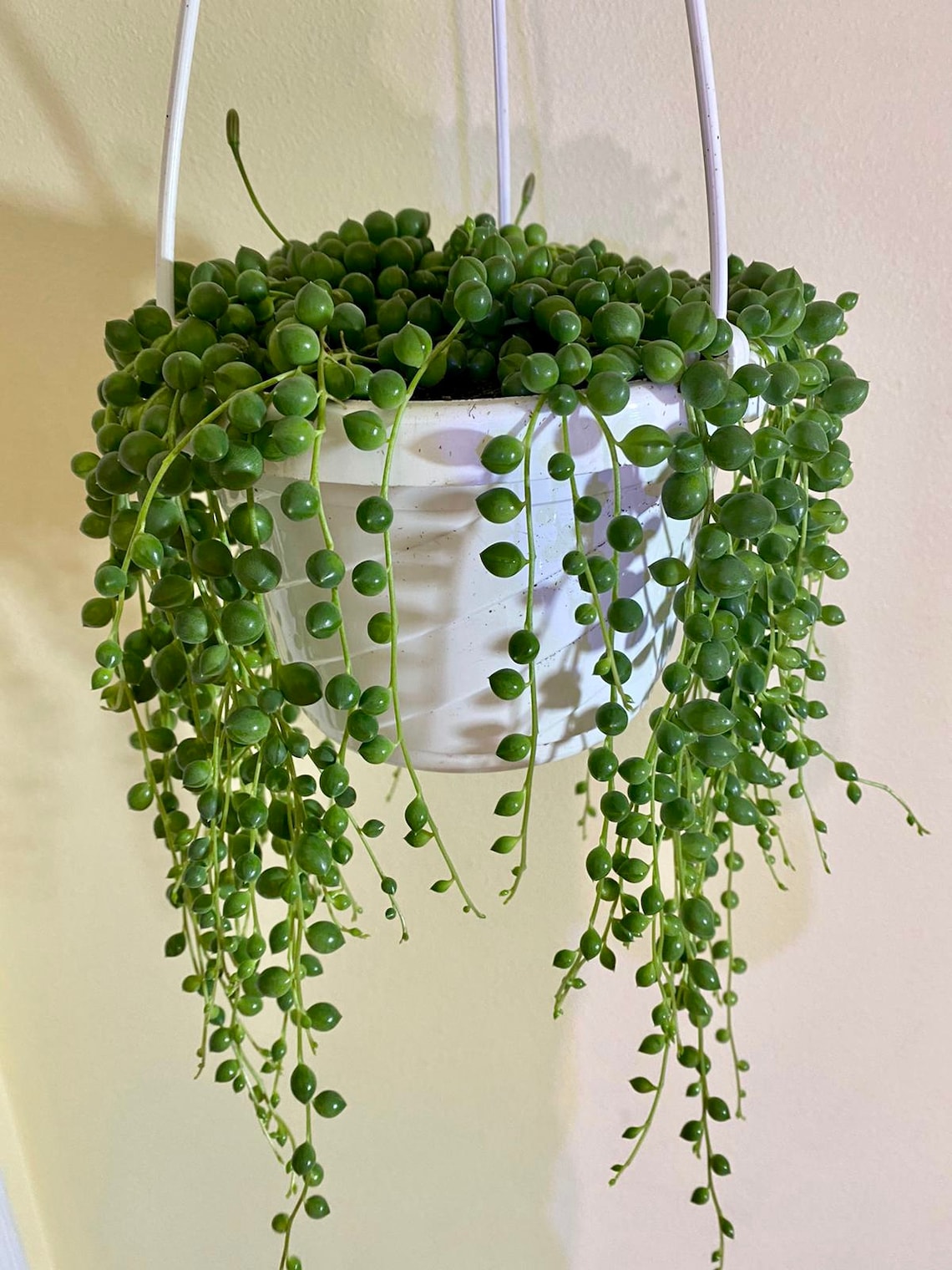

:max_bytes(150000):strip_icc()/kararileystringofpearls-8-02a216f00a3945b4af36746867343027.jpg)
